Dezeen's top 10 bamboo architecture projects
As part of our series focusing on the rising popularity of bamboo, here is a countdown of the ten most popular bamboo architecture projects on Dezeen, including a cafe, houses and a theatre as well as work by Kengo Kuma and Vo Trong Nghia (+ slideshow).
1. Bamboo Courtyard Teahouse by HWCD Associates
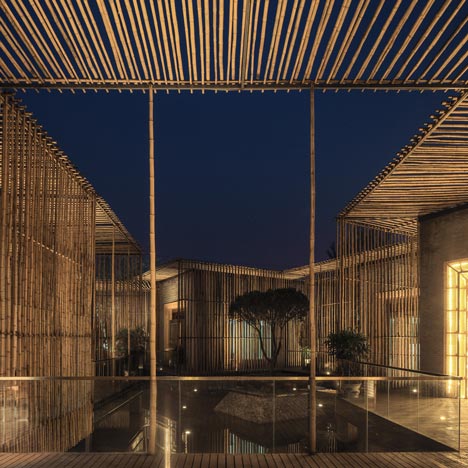
Most popular among Dezeen readers is this floating tea house in Yangzhou, by Chinese architects HWCD Associates, which is organised in asymmetric cubes that sit on a lake.
"The tea house is known as the bamboo courtyard as it mainly uses bamboo to create an interesting play of vertical and horizontal lines," said the architect. "In some spaces, the vertical and horizontal elements intensify to form a psychedelic perspective, evoking a profound sensory perception."
2. Kontum Indochine Cafe by Vo Trong Nghia Architects
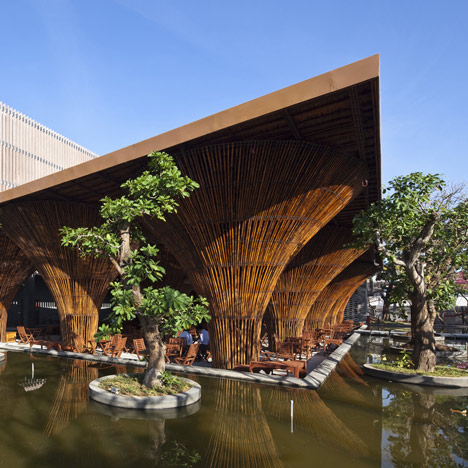
Second most popular is this waterside cafe with striking bamboo columns by Vo Trong Nghia, who featured in our series of interviews with architects from the new bamboo movement this week.
The shape of the top-heavy columns in this restaurant designed for the Kontum Indochine Hotel in the designer's home country of Vietnam are a reference to traditional fishing baskets used in the region and are echoed in the firm's designs for the country's Milan Expo Pavilion.
3. Low Cost House by Vo Trong Nghia Architects
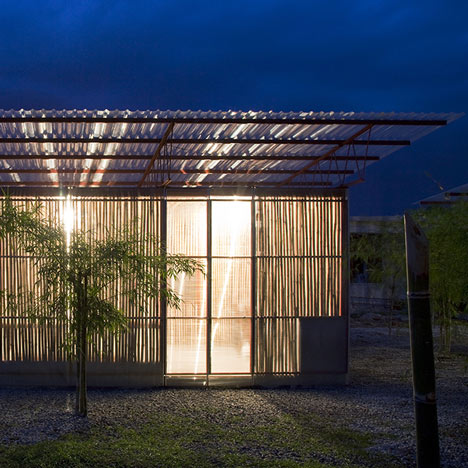
Vo Trong Nghia is one of a number of architects also using bamboo to address some of the biggest challenges facing countries around the world – in this case housing for a rapidly growing population.
"The project started as voluntary work, responding to the serious housing issue for low income classes in Vietnam," Vo Trong Nghia Architects told Dezeen. "We inspected Mekong Delta Area, where the housing problems for the poor are very serious."
The result was this prototype for modular homes that use locally sourced materials to keep costs down and make them easy to assemble.
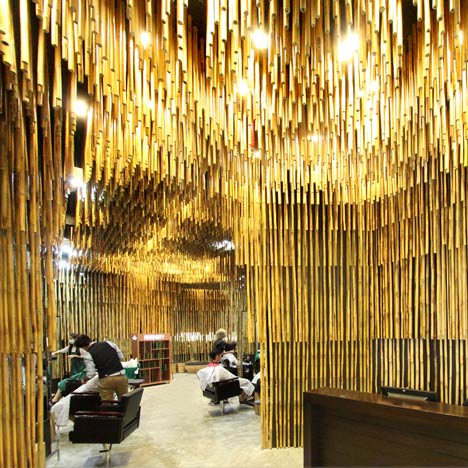
Thai designer Nattapon Klinsuwan of NKWD was inspired by the rock formations that create natural divisions in caves, where he noticed that "often the stalactite and stalagmite will connect and become a column, then a wall, creating rooms."
To emulate this effect in the design for a hair salon interior, thousands of bamboo rods were hung from the ceiling in different lengths – in some places long enough to touch the floor – to create screens and permeable walls, separating the shampooing and colouring areas from the main space.
5. Wind and Water Bar by Vo Trong Nghia
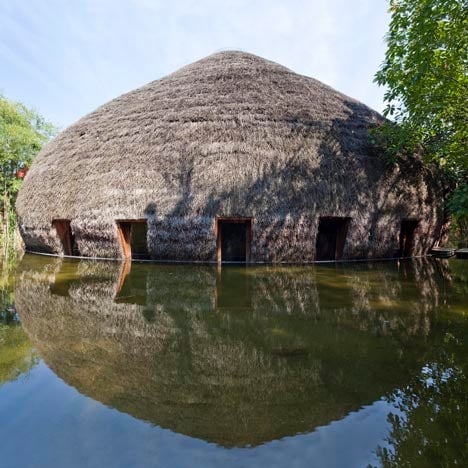
Lengths of bamboo are bound together and bent into arches to create the supporting structure for this thatched dome, which sits in the middle of a lake in the Binh Duong Province in Vietnam and is used as a venue for music performances, local meetings and other events.
This project was one of the first we featured by Vo Trong Nghia, who recently told Dezeen that bamboo would be the "green steel of the 21st century".
6. Blooming Bamboo Home by H&P Architects
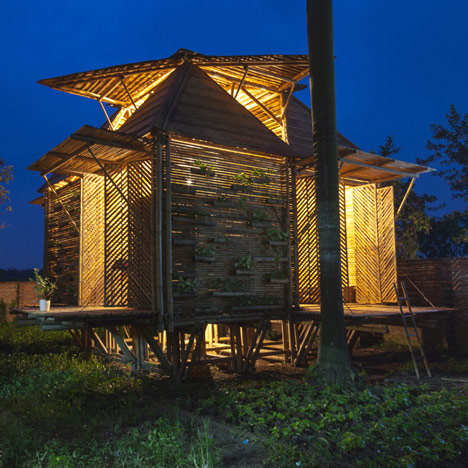
The prototype house was designed by Vietnamese studio H&P Architects to sit on stilts in an attempt to create a structure that could withstand floods up to three metres above ground. Tightly packed rows of bamboo cane are used to form the floors, walls and roof, which can be propped open for additional ventilation.
"The house can keep people warm in the most severe conditions and help them control activities in the future, also contributing to ecological development as well as economic stabilisation," said the architects.
7. Bamboo construction for Haiti wins Foster + Partners Prize 2013
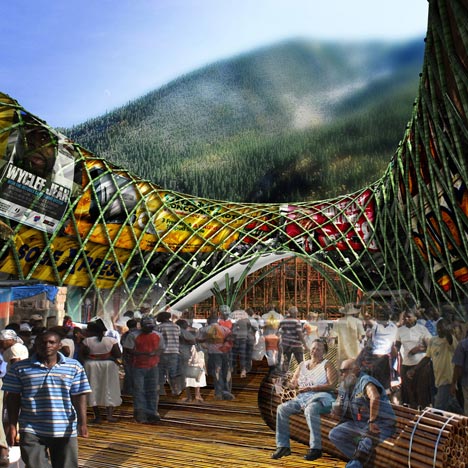
Bamboo is a popular material for architects working on humanitarian projects in Asia and beyond, thanks to its sustainable nature, low cost, strength and flexibility. Last year, Architectural Association graduate John Naylor won the school's Foster + Partners Prize with his proposal to introduce bamboo to the construction industry in Haiti, which is still struggling to recover from the 2010 earthquake.
"In a proud culture such as Haiti, preaching a new form of building to the construction sector is riddled with problems," he explained. "This rematerialisation of a construction industry and subsequent demand aims to engender bamboo growth in Haiti."
8. Nangchang Nangchang bamboo installation by Kengo Kuma
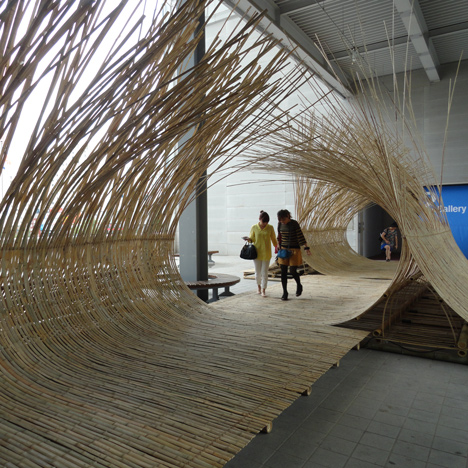
In an interview with Dezeen earlier this week, Chris Precht of Austro-Chinese practice Penda described Japanese architect Kengo Kuma as one of the leading figures in the new bamboo movement.
In this installation for last year's Gwangju Design Biennale in South Korea, Kuma showcased the material's versatility, splitting it into three centimetre strips to create a curved walkway and seating structure.
"The objective of my exhibit at the Biennale is to reconnect the human body with architecture," said Kuma.
9. West Kowloon Bamboo Theatre by William Lim
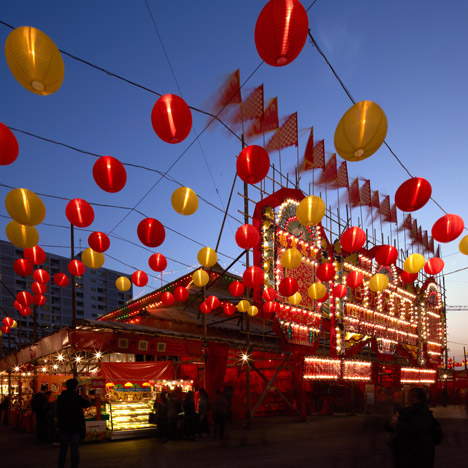
Designed in the same style as traditional theatres built since the 1950s, this pop-up bamboo building in Hong Kong's new West Kowloon Cultural District hosted Cantonese operas as part of the city's New Year celebrations in 2013.
William Lim of local architects CL3 stretched orange nylon sheets over a tiered roof to imitate the ancient palaces of Beijing's Forbidden City, and the interior and exterior were festooned with red and gold decorations.
10. House in the Philippines by Atelier Sacha Cotture
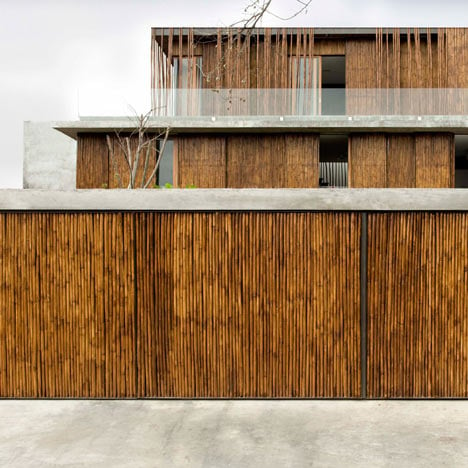
Surrounded with bamboo cladding, this house by Swiss-Filipino studio Atelier Sacha Cotture wraps around a central courtyard to restrict views of the interior from adjacent properties.
Explaining the choice of bamboo, the architects said: "It is a low cost and sustainable material that grows intensively locally. This material has been historically used in the country for the fabrication of handicrafts, native architecture and utilitarian objects."